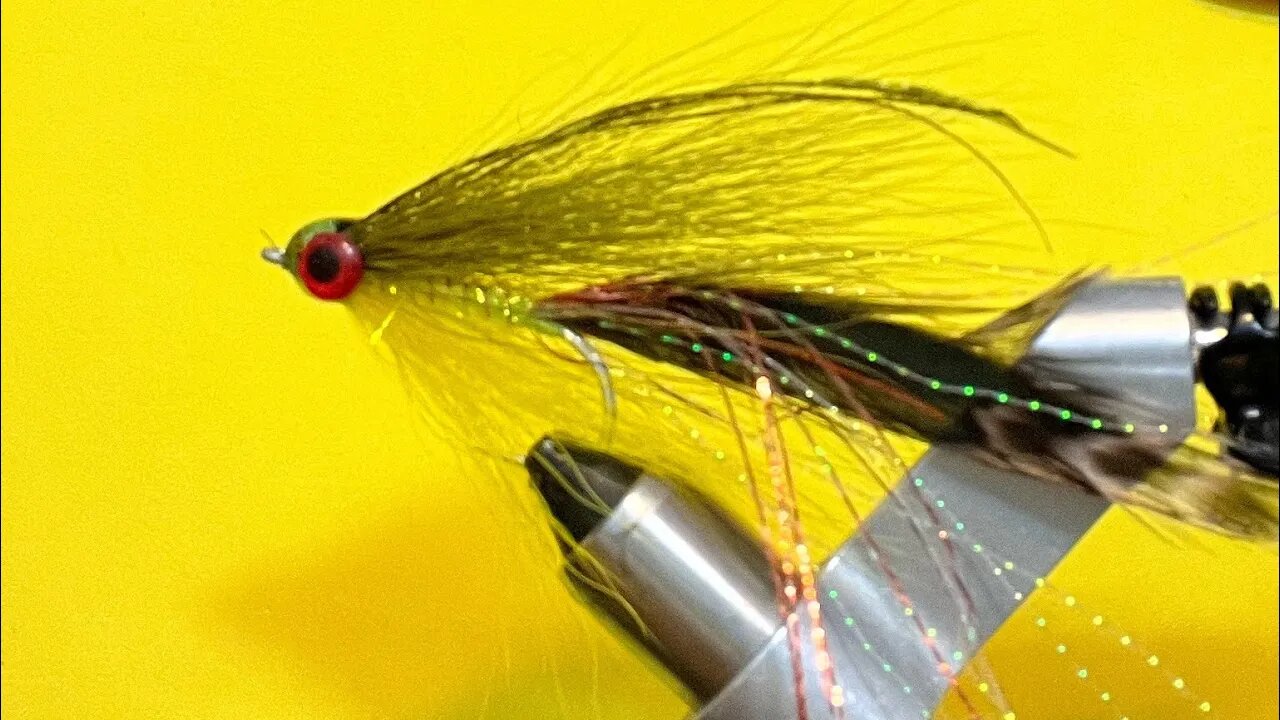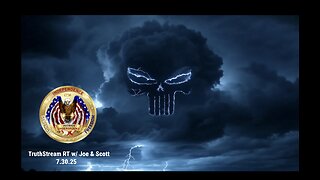Premium Only Content

1/0 Hook Left’s Deceiver in Yellow and Olive #fishing #flyfishing #flytying #fish #bass #trout #hike
The Lefty's Deceiver is an artificial fly streamer pattern used in fly fishing for freshwater and saltwater species. The fly was originated by fly angler and author Lefty Kreh in the Chesapeake Bay for striped bass. The original fly was tied to resemble smelt, a common striped bass forage. The Deceiver is arguably the best known saltwater fly pattern in the world and in 1991 the U.S. Postal Service honored Kreh’s creation with a postage stamp.
The original Lefty's Deceiver was tied with white saddle hackles tied in at the bend of a standard, short shank saltwater hook. Four to six hackles were used with tips curved to the outside. Flash was added on top of the hackles. The original body was silver tinsel. A collar of white buck tail was layered at the top, sides and bottom of the front of the hook. The buck tail extended just beyond the hook bend.
In the 1960s when Lefty Kreh relocated to South Florida and began pushing the limits of saltwater fly fishing, the Deceiver grew in popularity and in variety. Today, the Deceiver is tied in an almost infinite number of color-material-size combinations. In 2012, Kreh published 101 Fish—A Fly Fisher’s Life List detailing many of his fly fishing exploits around the world. A great majority of those species were caught on variations of the Lefty’s Deceiver.[4] Fly tiers have recreated the pattern in a wide variety of colors and configurations to mimick the various fresh and saltwater forage fish that larger fish feed upon.
-
 8:14
8:14
MattMorseTV
15 hours ago $4.84 earnedTrump just DROPPED the HAMMER.
23.2K30 -
 2:47:03
2:47:03
Patriot Underground
18 hours agoTruthStream RT w/ Joe & Scott (7.30.25 @ 5PM EST)
35.8K24 -
 42:04
42:04
World2Briggs
15 hours ago $0.83 earnedRanking All 50 States By Natural Beauty Will Shock You!
3.43K1 -
 42:46
42:46
The Kevin Trudeau Show Limitless
21 hours agoManifest Anything: The Secret Teachings of Kevin Trudeau
1.7K3 -
 LIVE
LIVE
Culture Crack
1 hour ago🔴 FINISHING Games | Metal Gear Rising, Prototype 2, Callisto Protocol + Online Safety Act Discussion
56 watching -
 DVR
DVR
saiyagamertv
5 hours agoIm ready to RUMBLE lets WIN!!
45 -
 13:05
13:05
IsaacButterfield
1 day ago $0.78 earnedPedro Pascal Needs To Stop
4.45K4 -
 11:25
11:25
Nikko Ortiz
15 hours agoMost Painful Fails
25.4K23 -
 LIVE
LIVE
TheDonOfEverything
7 hours agoLet's Play Wuchang: Fallen Feathers - Part 3 | LIVE ON RUMBLE (WalkThrough)!
66 watching -
 LIVE
LIVE
DoldrumDan
2 hours agoNEW NIGHTREIGN UPDATE?! LEVEL 1 FINAL BOSS CHALLENGE RUN HITLESS INTO ELDEN RING DLC
9 watching